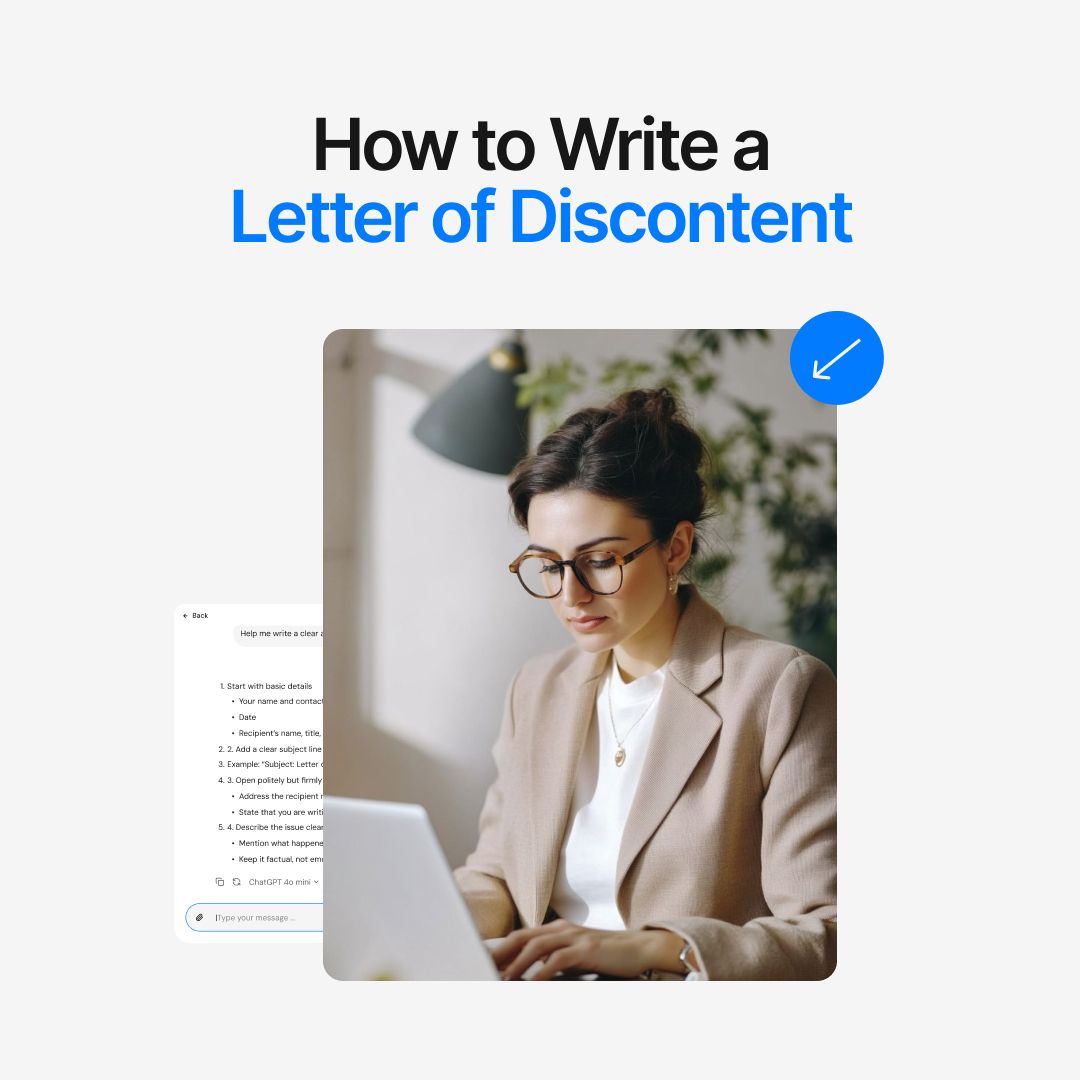Frequently Asked Question
More topics you may like

How to Write a Cover Letter with No Experience Using AI Chat

Muhammad Bin Habib

How to Write a Strong Reference Letter

Muhammad Bin Habib

How to Write a Letter of Discontent That Conveys What You Feel

Muhammad Bin Habib

How to Write an Appeal Letter with AI

Muhammad Bin Habib

How to Write a Recommendation Letter for a Coworker

Muhammad Bin Habib
